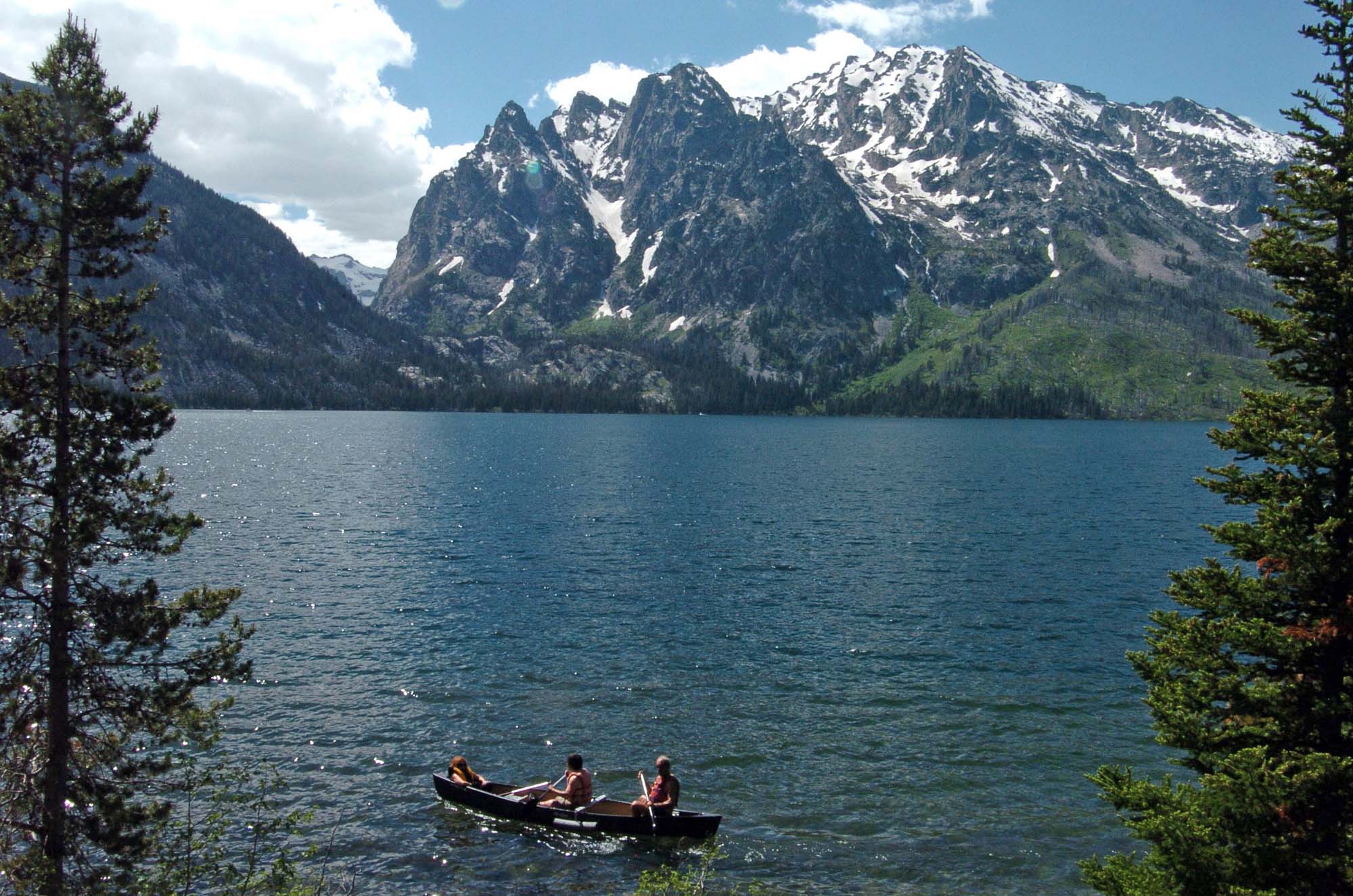
A group paddles a canoe on Jenny Lake in Grand Teton National Park. A National Park Service study found that visitors to Grand Teton and Yellowstone national parks spent a total of $758 million in local economies in 2010. (Ruffin Prevost/Yellowstone Gate - click to enlarge)
By Ruffin Prevost
CODY, WYO. — Yellowstone and Grand Teton national parks and their gateway communities received more than $750 million in tourist spending that supported more than 11,000 jobs in 2010, according to a new report from the National Park Service.
The 2.7 million recreation visitors to Grand Teton National Park in 2010 spent more than $424 million there and in nearby Wyoming communities like Jackson, Wilson and Teton Village, the study found.
That topped economic figures from Yellowstone National Park, where 3.6 million visitors spent more than $334 million in the park and the Montana communities of West Yellowstone, Gardiner and Cooke City, as well as Cody, Wyo.
Grand Teton National Park Superintendent Mary Gibson Scott said in a statement that Grand Teton, Yellowstone and other national park areas “protect our nation’s treasures and provide valuable experiences and enjoyment for visitors from the United States and around the world.”
“These national parks also drive local and state economies in very tangible ways, and generate jobs that keep Americans employed,” Scott said.
Park Service managers and public affairs officials around the country were sharing talking points from the peer-reviewed study Tuesday, the same day Interior Secretary Ken Salazar faced questions from some members of the Senate Energy and Natural Resources Committee who were unhappy with restrictions on oil and gas drilling on federal lands and a 20-year ban on new uranium mining near the Grand Canyon.
The study found that national park visitors nationwide pumped more than $31 billion into local economies and supported 258,000 jobs in 2010, offering a counterpoint to energy industry advocates who want fewer limits on federal lands managed by Salazar, including environmentally sensitive areas near parks.
“Our National Parks and other public lands continue to be economic engines that produce and support jobs in communities across America,” Salazar said in a statement released Tuesday.
“By investing in our parks and promoting them to visitors, especially internationally, we can have the dual benefit of an improved National Park System and a stronger economy that produces more jobs,” he said.
“National parks are best known for their incredible beauty and the preservation of America’s historical legacy, but they are also critical assets for local economies,” said National Park Service Director Jonathan B. Jarvis.
“The investment American taxpayers make in their national parks continues to offer a huge return, not only in priceless family experiences but in real jobs and economic growth in our gateway communities that ripples to suppliers across the nation,” Jarvis said.
Grand Teton National Park trailed only Great Smoky Mountains National Park in total visitor spending. That park saw more than $818 million in tourism dollars injected into gateway communities in North Carolina and Tennessee.
Grand Teton spokeswoman Jackie Skaggs said she was excited to see her park ranked second-highest on the list of more than 350 sites nationwide.
“I looked at it and said, ‘Oh my gosh, we beat Yellowstone,'” said Skaggs, who laughingly admitted to a competitive streak when it comes to the neighboring park.
A previous study in 2004 found that total visitor spending around Grand Teton was $590 million, Skaggs said. That study was done before the economic downturn, and included local spending, whereas the 2010 study excludes spending from visitors who live within about 60 miles of the parks.
Skaggs said she was a little surprised that visitors spent $90 million more in the Grand Teton area than in Yellowstone in 2010, but said a number of factors may have contributed to the difference.
Jackson offers a wider array of high-end food, lodging and recreation options than other nearby gateway communities, she said, and the area’s relatively strong winter economy is boosted by world-class skiing and snowboarding opportunities.
“There may be more discretionary income in some visitors here that brings a higher level of spending based on their economic capabilities,” she said.
Skaggs said she was unsure how the study segregated spending between Yellowstone and Grand Teton when many tourists visit both parks and surrounding communities during the same trip.
The two parks supported an estimated total of 11,139 jobs in 2010, according to the report. Nationwide, about half of those park-related jobs were in lodging or food and beverage services, while just under a third were in retail sales.
Scott met Tuesday with Wyoming legislators in Cheyenne, where she also is attending a state tourism conference, Skaggs said. The Legislature is working to complete its biennial budget, and though mining is by far the state’s biggest industry, tourism is Wyoming’s second-largest.
The study does not directly address the specific state and local tax revenues derived from national parks, but instead includes indirect business taxes as part of a value-added revenue calculation.
But based on a combined total of $758 million spent in Yellowstone, Grand Teton and surrounding communities, tax revenues for Montana, Wyoming and Idaho are sure to be substantial. Roughly 85 percent of the nationwide spending categories listed in the report are subject to sales or lodging taxes.
The economic impact figures for the National Park system are based on $12 billion in direct spending by the 281 million visitors to parks in 2010 and are included in an annual, peer-reviewed visitor spending analysis conducted by Daniel Stynes of Michigan State University.
Contact Ruffin Prevost at 307-213-9818 or ruffin@yellowstonegate.com.

save the wolf!!!!